How To Create A Good Study Schedule
There might be affiliate links on this page, which means we get a small commission of anything you buy. As an Amazon Associate we earn from qualifying purchases. Please do your own research before making any online purchase.
This is a guest post by Niklas Goeke. Niklas is a freelance writer and coach on coach.me. Action is his cure to anything, so he won't be mad at you if you cut some corners and jump right into the mini-course that helps you implement a study schedule.
Do you find yourself procrastinating a lot when trying to study?
Can you not keep up with the amount of materials with your current study schedule?
Are you having trouble remembering the material? (Side note: The Feynman Technique is a great strategy that can help you solve this issue.)
Do you maybe even pull all-nighters, cramming as much as you can the night before an important test?
Then it's time for a study plan schedule that works! Recently I helped my friend Ted revamp his study habits so he could take 7 exams in 10 days. (Check out our collection of free study plan templates to help you get started!)
Here's us revising his statistics material on a recent call:

(the material being in German doesn't make it easier)
Thanks to his new study schedule, he passed 6 of them with flying colors! Felix Wong even took it a step further and completed an MBA in 4.5 months. Getting an MBA takes most people 2+ years and tens of thousands of dollars. Felix did it in 135 days, paying less than $3000. This would have been impossible, had Felix not had an incredible study plan.

Steve has already shown you 11 good study habits. So you should already have a good study routine, so today we'll take a closer look at each one and show you how you can implement them right away.
What will you accomplish with a new and excellent study routine? Finish your degree? Write a paper? Ace a presentation? There's no time to waste, let's go!
(Side note: Another positive way to improve your life is to read and learn something new every day. A great tool to do this is to join over 1 million others and start your day with the latest FREE, informative news from this website.)
What You Will Learn
- Step 1: Find out your learning style
- Step 2: Set realistic study goals
- Part 1: Pick a very simple goal for your semester
- Part 2: Create a list of all the tiny actions you need to take towards your goal
- Step 3: Make study time a part of your daily routine
- Step 4: Structure your study time
- Step 5: Create your own study zone
- Step 6: Take notes depending on your learning style
- Step 7: Review your notes regularly
- Step 8: Don't use your laptop or smartphone during class
- Step 9: Find at least one learning partner
- Step 10: Create good sleep habits
- Step 11: Make sure you track your progress with some kind of study planner
-
- Tool 1: TimeEdition
- Tool 2: Study Planner & Accountability Chart
-
- Final Thoughts on the Study Schedule That Works
- You can grab those bonuses here.
Step 1: Find out your learning style
We now accept the fact that learning is a lifelong process of keeping abreast of change. And the most pressing task is to teach people how to learn. ~ Peter Drucker If you don't know how you learn best, it will be impossible for you to learn efficiently at all. There are 5 different styles of learning, all of which fall into one of two groups.
1. If you are a visual learner, you will understand the 5 different styles best by looking at this picture, since images and a sense of spatiality help you get a grip on things:
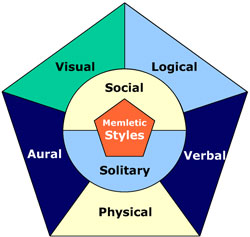
2. Should you be an aural learner, you pick up things by hearing and listening closely. Watching this TED talk about learning styles will probably help you understand the concept much quicker than reading through this section.This also means music and sounds will help you while studying.
Try listening to some kind of white noise, like rain sounds while you learn. Listening to one song on repeat (especially classical music and instrumentals) can also help you focus.
3. Maybe you are a verbal learner. Using words in writing and speech comes naturally to you. You win the 'blog lottery', because reading articles works perfectly for you.
Try to repeat out loud what you remember about the 5 learning styles after you finish this section to see if speaking helps your memory.
4. If you are a physical learner you'll prefer using your body, touching things with your hands, and are focused on the feelings you get while doing whatever you're trying to learn.
Try printing this article. Just holding the paper in your hands as you read will help you understand better. Furthermore buying some study printables gives you a chance to put your hands on a good study schedule and really come to grips with the study plan format.
5. Lastly, you might be a logical learner. You like to sort things logically, create systems and are a very reasonable person.
Try to create your own arrangement of the five learning styles and two categories, maybe draw a mind map or use index cards to build a structure that works well for you.
No matter which of these you are, you can fall into one of two groups: solitary learner or social learner.
This simply describes whether you best learn alone, just going over the material by yourself, or whether you usually gain your best insights when you study with a group where you explain problems, teach each other, ask questions and review together. In order to create a good study schedule, it is absolutely necessary for you to know what type of learner you are.
You probably have somewhat of an idea what type of learner you are already. Your intuition is usually right, but to make sure, you can take this short 5-minute quiz.
Click here to take the quiz and find out your learning style right now!
Step 2: Set realistic study goals
There are two steps to achieving a goal: planning and executing. A plan without execution is no good, but so is random execution without a plan. You will only reach your goal when you do both of them well. (Here are examples of SMART goals for students.)
When Felix set out to get his MBA in such a short time, he planned well ahead, knowing exactly how many classes he would have to take, how many papers, quizzes, and exams were necessary for each one and even how many chapters he had to read in his study books.
That gave him a good idea of how long it would take him to complete the entire program. The problem with setting a realistic study plan template is most of us don't know what's realistic.
Did you ever tell yourself: Tomorrow I will read 5 chapters in my biology book, complete the English class assignment and take an online quiz – and then failed to do it all and felt bad about yourself?
![taking a nap rather than updating my study life app [image of lazy guy sleeping]](https://niklasgoeke.com/wp-content/uploads/2015/08/nap.jpg)
It's really hard to know what we can realistically achieve in one day.
But if you yourself don't even know, how can I give you advice on how much you should take on each day?
Well, I know this: If you give yourself one thing to do each day, only one small to-do, then you can definitely achieve that. There are two things you need to do to create your one-item study schedule for each day.
Part 1: Pick a very simple goal for your semester
My friend Ted set himself one goal for the semester: Take 7 exams. He even pinned it right above his TV:

Pick a very simple goal for your current term or semester that you want to achieve. For example, you could make it your goal to write 50 pages for your thesis, attend 5 classes, or complete a 6-month internship.
Make sure your study goal is not results-oriented, but focuses on the experience. You can write 50 pages, attend 5 classes and show up every day at your internship. That's all up to you.
But if your goal is to complete the degree, pass 5 classes or get a great review on your internship, that's not only in your hands. Your goal shouldn't depend on others. It must be something you can control.
Part 2: Create a list of all the tiny actions you need to take towards your goal
We then created a list of all the things Ted had to learn for all of these exams. For example statistics: He had several lectures to attend and wanted to complete 10 exams from previous years as practice. So the list looked like this:
- Attend lecture 1
- Attend lecture 2
- Attend lecture 3
- …
- Take practice exam 1
- Take practice exam 2
- Take practice exam 3
…and so on. Break your goal down into baby steps. Think as if you wanted to explain to a 3-year-old what she must do to get to that goal. You know your list is good when you have a lot of items on it (because you'll do one each day) and when your items take an hour or less.
Note: It helps a lot to set deadlines, so if you want to study for several classes, set milestones for every month or every 2 weeks. This will help you get motivated to actually make a little progress each day, especially because doing one thing is not that hard 🙂
Do you not have anything to study at the moment? Many adults may not have a specific curriculum like those attending classes. This does not mean that you should be doing nothing. Self education is an important part of our modern world. If you have nothing to specific to study why not investigate some self education options you can learn on your own.
Step 3: Make study time a part of your daily routine
There is only one difference between an amateur and a professional: The amateur waits until he feels inspired or motivated to do the work.
The professional has a schedule that he sticks to, come hell or high water. If you want to reach your study habit goal, you really need to make studying a daily habit. ( And here's one course that can help you do this. )
When my girlfriend's elementary school teacher told her to complete an assignment, she would sometimes say: "I don't feel like it." Her answer always was: "Well, then you'll do it without feeling like it." Studying daily, whether exams are coming up or not, will give you a huge advantage over all your friends who try to cram all their studying into a few long days (and nights). To make studying part of your routine, first you must know at what time of the day you usually perform best.
For most people, it's the morning, because at 10 am your alertness is highest, according to your circadian rhythm. But for you, it might be different. If you need to try different study times, start by picking one where you think you're likely to do well.

Block the time in your calendar, give yourself at least an hour each day to complete one of your tiny action items. For example, I'm trying to write daily right now, so I blocked time in my calendar each day:
If you want to study in the morning, you could also try out a morning routine and make studying an updating your study planner a part of it.
Keep the commitment small though, you know how easy it is for life to get in the way. Make sure you commit to a study schedule you can keep. Consistency is more important than taking huge steps.
Step 4: Structure your study time
If you often feel worn out after studying for a while and just can't talk yourself into continuing, maybe you need to restructure the way you study.
The key to staying fresh and alert during long study sessions is to include lots of breaks. No matter what time of the day you picked to study, try using the Pomodoro Technique.
You set a timer for 25 minutes and get started. Depending on your own preference, you can either start with your most difficult tasks (do this if you tend to avoid them altogether) or with an easy one to get some momentum and feel more prepared (do this if you give up easily on them).
Once your 25 minutes of focused time are over, you set the timer to 5 minutes for a short break. It is important that you do nothing related to studying during that time. You should relax and recharge. Get up, move around, activate your muscles and get some blood flowing.
A walk around the block is perfect, it will give you fresh air and get you closer to your 10,000 steps for the day. After the 5 minutes are over, study for another 25 minute block, and so on.
The creator of the technique recommends a longer, 10-minute break every 4 blocks, but I usually find myself taking an even longer one, usually about an hour where I eat something as well. Don't pressure yourself into doing too many blocks in the beginning.
If you can eventually reach 6-8 blocks per day, that's plenty. 3 to 4 hours of focused study time are worth much more than 8 hours where you neither really study nor actually relax. Many professionals know this.
Woody Allen writes 3-5 hours per day and he produces a comedy in a month. World-class chess players also often study 3-4 hours per day and spend the rest of it exercising and resting.
Step 5: Create your own study zone
The best way for you to "get into the zone" while studying is to, well, get into the zone. Your study zone. Having a specific location for your studies will help you trigger the habit as soon as you enter the room or place. Your study zone should be clean and distraction-free. Check out my desk:
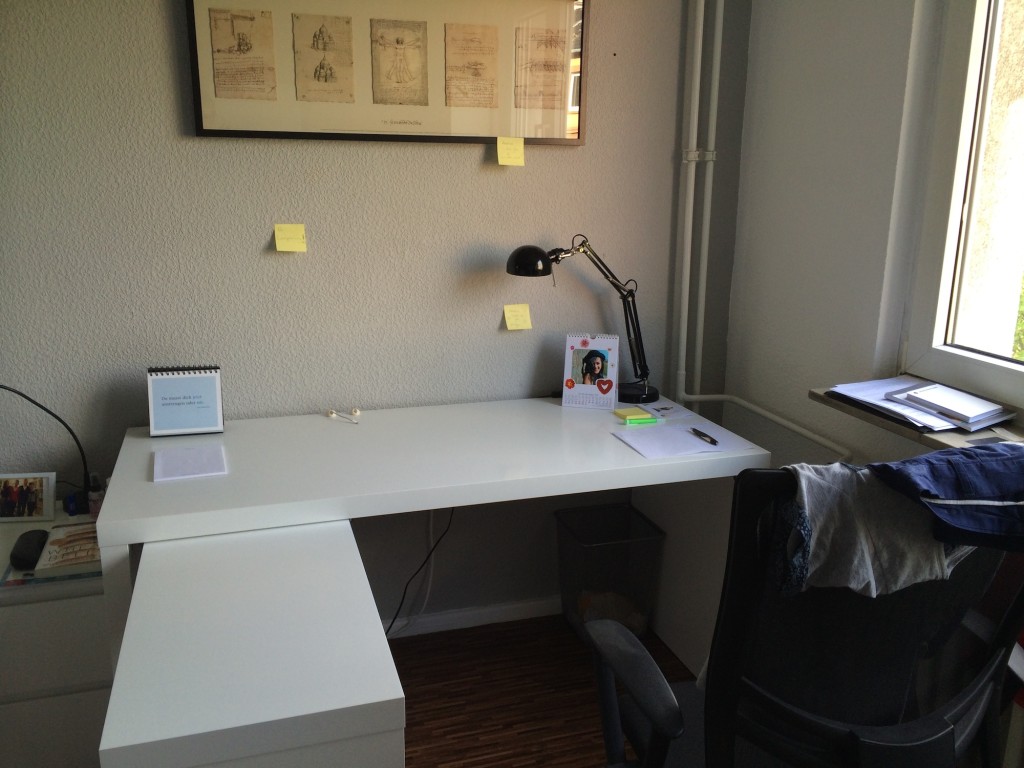
I only have a calendar, some paper for taking notes, and an inspiring quote on it. Nothing else. I just put my laptop on it and work. Don't leave stacks of papers, bills, pens, cables, headphones, phones, books, magazines and all other kinds of distractions lying around. A cluttered desk leads to a cluttered mind.
Try to have at least two study zones, so you can switch in case you need to. My favorite second place to study right now is our couch:

I can just put my laptop on my lap and work comfortably and without distractions.
If you're an aural learner like me, you might need your study zone to be quiet or listen to a song on repeat to really focus well. But maybe you do well with some background noise, so it might be a good idea to establish a study zone at a local coffee shop or the library.
Eliminate all possible distractions. Put your phone on silent (turn off the vibration!) and, if possible, leave it in another room to avoid it altogether. Don't study in the room where your TV is or close to the door of a place where people enter and leave all the time. The worst and easiest distractions are only a click away online, so make sure you block those. Here are some tools to help you do that:
- SelfControl (Mac) / ColdTurkey (Windows)
- TimeOut (Mac) / Workrave (Windows)
- Facebook News Feed Eradicator (Chrome)
- Adblock Plus (all browsers)
Also, setting your browser to reopen all tabs from your last session might seem like a smart thing to do, but it really just produces information overload, so set your options to the new tab to make sure you always start with a clean slate.

Remember: Your study zone should minimize stress to maximize focus.
(And if you'd like to learn more about this topic, then here are 14 habits that can kill your productivity.)
Step 6: Take notes depending on your learning style
Taking notes is an important skill that you should try to master. How and when you should take notes depends heavily on your learning style, but before we get into that I'd like to help you avoid a rookie mistake.
Don't take notes of everything! If you write down everything you will just be left with a transcript of the lecture, which you'll then have to learn again from scratch, since you didn't pay any attention when the lecture actually happened.

(taking pictures is similar, you gain a photo, but you lose a memory!)
This is not a good way to learn, especially if you're an aural learner. Just listen to the lecture, give it your full attention and once it's over, take notes of the most important ideas as you go through it again in your head.
Maybe even record the lecture, if that's possible. Visual learners can draw little sketches and diagrams or copy the mindmaps and graphic schemes the teacher draws on the board. Verbal learners can jot down important points as they listen, but do so only if the teacher keeps repeating and emphasizing this point – this is a good indicator that it'll be important later on, for example in a test.
No matter how you take notes and how you use them, the most important part is that your note-taking style fits you. It doesn't matter if anyone else thinks it's right or wrong. Take Ludwig van Beethoven, for example. He left behind hundreds of sketchbooks filled with notes. Yet he said he never looked at them while he was composing.

When someone asked him why he took notes in the first place he said: "If I don't write it down right away, I instantly forget it. If I write it down, I never forget it and don't have to look at it ever again."
Note: It is also a good idea to keep digitized versions of your notes: Steve talk about the good reasons to digitize study notes and study plans.
Step 7: Review your notes regularly
Unless you're Beethoven, you will likely have to look at your notes again some time. Whether you think that's best done before a study session, or after, is up to you.
What has been shown to help improve memory is looking at notes right before you go to sleep.
A great way to review your notes is to use Anki.

Anki helps you study with flashcards. There are many decks you can download, for example to learn countries, like above. You are shown a word, map, symbol or question, and when you have the answer you press space.
Depending on how you think you did (did it take you long to find the answer? did you have it immediately?) you can decide whether you want to do this card again sooner or later.
You can even create your own decks, based on your notes! Anki also lets you adjust how many new cards to add each session and shows you how many you need to review again soon.
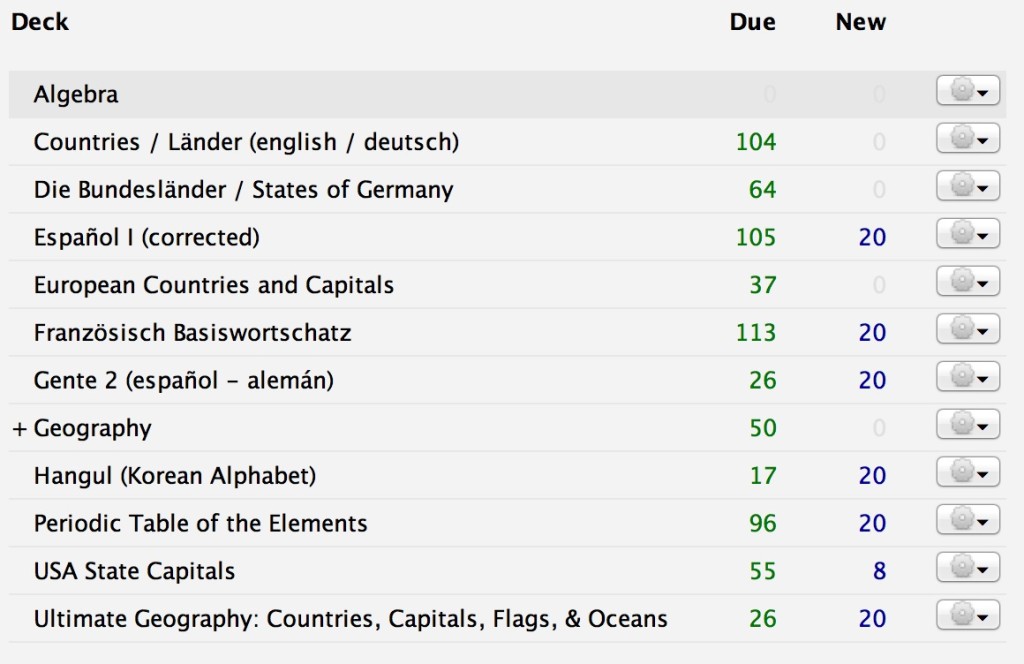
Step 8: Don't use your laptop or smartphone during class
There is almost no way in which browsing the web, texting or checking email can be beneficial for your studying habit. Every second you spend looking at a screen is a second of focus lost. Rare exceptions are when the teacher keeps using a word you don't know the meaning of, or you must look up a concept again. But if you have been taking good notes, all the information you need will be in them.

Bring paper & pen, a light snack, some water to drink and, most importantly: your attention. You being mindful and observant during class is the biggest favor you can do yourself and your teacher. Maybe you can even ask a few questions.
Showing your teacher you make an effort to understand the material is a way of communicating no laptop or smartphone can take care of for you – and since so few people do it these days it's even easier for you to stand out by doing it.
Step 9: Find at least one learning partner
Accountability is huge.
Have you ever agreed with a friend to meet at a certain time somewhere? Or even had a workout buddy?
The second you know someone will be there, waiting for you, makes it much more likely for you to follow through on your intentions.
Think about it, if you buy a ticket to a movie, concert or flight, then you'll definitely make sure you're there on time.
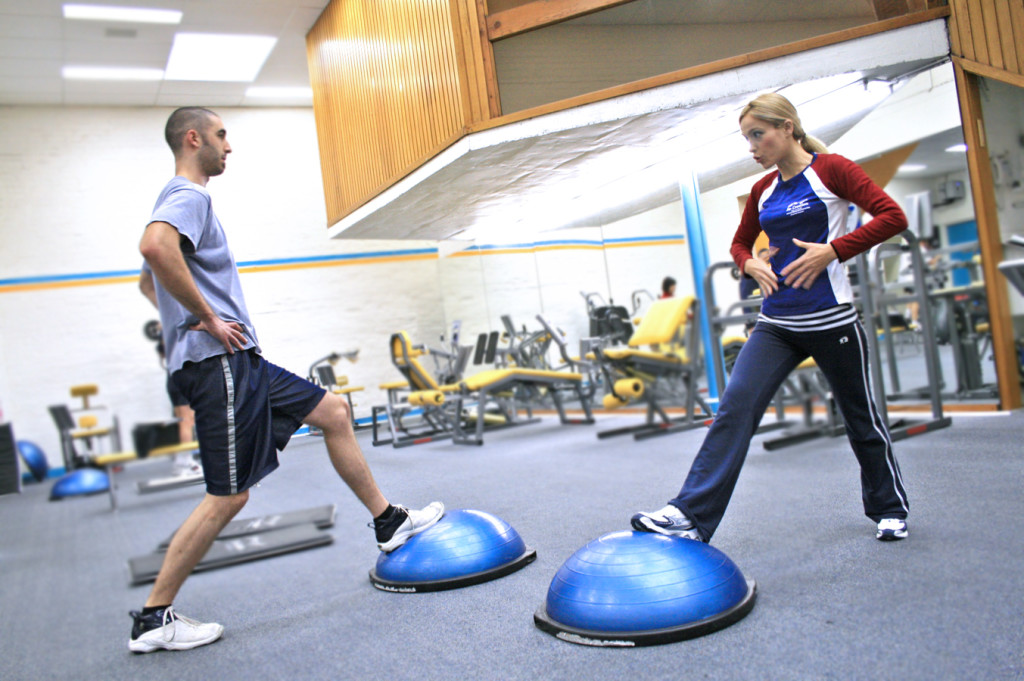
Whether or not you want to join an actual study group is up to you – if you're a social learner, you should definitely try to learn with others as much as possible. But if you're a solitary learner, that might not be as beneficial. Nevertheless, having at least one accountability partner can make a huge difference.
Try to get a friend to text you once a day to see how you're doing with your studies.
You can also create a facebook group so you'll still have the chance to ask questions, learn by answering others' questions, share problems you run into or a big insight you gained.
Interacting with others regarding their progress regularly will make you want to keep up! If you can't get a friend to be your accountability buddy, you can even hire a coach for $2 a day!
Online coaching via coach.me is tailored specifically to create accountability for those who want to create new habits. Your personal habit coach will check in with you every day to make sure you follow the study schedule you set for yourself.
If you are interested in learning more about the power of accountability and how to gain more accountability in your life, check out what Steve has written about the benefits of accountability and how to work with an accountability partner or even check out his ebook: Accountability Manifesto.

(The Accountability Manifesto will teach you everything you need to know to achieve more through greater accountability. )
Step 10: Create good sleep habits
In 2012 I was in my second semester of college. We had our most important exam, Statistics, on a Saturday. It was the most important one because failing it would mean failing the degree and having to pack my bags.
Naturally, my friends and I decided to dedicate all our study time towards that. Unfortunately, we had another exam in programming just 2 days later. Ugh. Guess what all my friends did?
They stayed up the entire night on Sunday, studying till the very last minute before the exam, which was Monday, 8 am. I knew my performance would suck without sleep, so I studied until 8 pm the day before and got a decent night's sleep instead.
Result: I scored 2-3 grades better than all of my friends, which is a lot on a 4-grade scale.
Did I learn more than them? No. I just took the exam refreshed and with a sharp mind, whereas their brains were already tired before they picked up their pens. Working through the night, chugging a bunch of Red Bulls and then powering right through the next day is a myth.
Studies have shown that if you only get 6 hours of sleep for two weeks straight, you'll perform as if you had just stayed up for 48 hours straight. That's two all-nighters in a row! Even worse: You won't notice your lack of performance. Professionals like LeBron James know that – the world's top NBA player gets 12 hours of sleep each night!

The best thing you can do to ensure you get enough sleep is set yourself a fixed bedtime each day. Check how much sleep you need, according to the National Association of Sleep:
![SleepTimeRecommendations012615[1]-page-001_0](https://niklasgoeke.com/wp-content/uploads/2015/09/SleepTimeRecommendations0126151-page-001_0-409x1024.jpg)
If you're not sure, try giving yourself 8 hours for a week and see how you do. At times when you have to get up for school at 6 am, for example, make sure you go to bed by 10 pm.
Tip: Set an alarm at night when you want to go to bed. Most people just set one in the morning, but that can actually make you more tired, especially if you use the snooze button a lot. Setting an alarm for a regular bedtime instead will help you not need an alarm in the morning.
Want to more tips improve your sleep? See what Steve has written about getting better sleep and see 41 great ideas on how you can improve the quality and quantity of your sleep. And also, here are 28 items that can help you get a better night's rest.
Step 11: Make sure you track your progress with some kind of study planner
The only way to make sure you're making progress is to check how you're doing every once in a while. Nothing is more demoralizing than feeling like you're getting a lot done, but then end up not seeing results. Here are two tools to help you stay motivated and get the right results:
"However beautiful the strategy, you should occasionally look at the results." – Winston Churchill
Tool 1: TimeEdition
TimeEdition is a simple tool that helps you track the time you spend working. You can define different customers, projects and then create tasks. I'm tracking the time spent on this post right now:
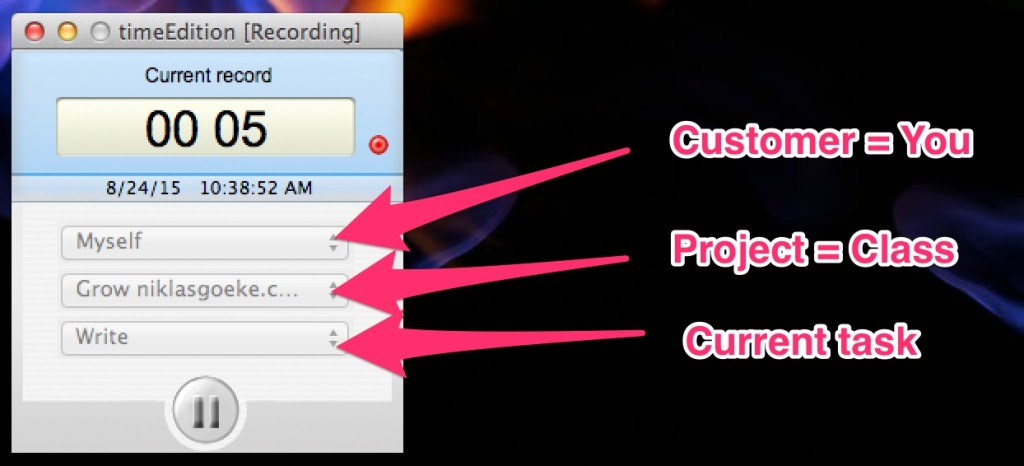
After you've downloaded the app, click on the top bar out of the 3 and go to 'Add customer…'
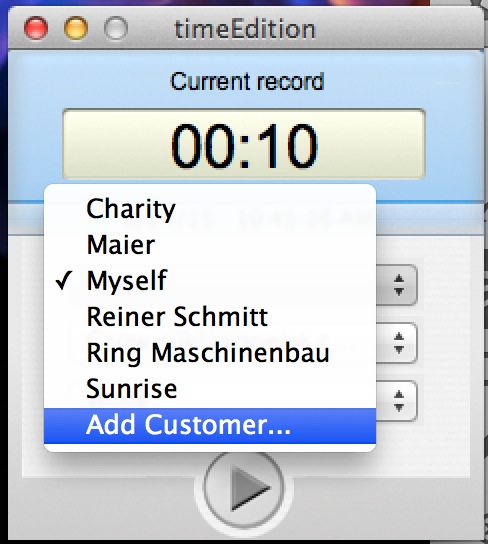

Enter 'Myself'. I always find it motivating to know I'm working for myself and on myself, what person to better spend time on?
Then, click on the middle bar and add a project. This could be a class, a paper, a longer assignment, whatever takes more than just 1 or 2 hours.
You can even estimate how long it will take you to complete the project. You can also copy tasks from former projects but don't worry about that part right now. Just enter your project, an estimated time and hit 'OK'.
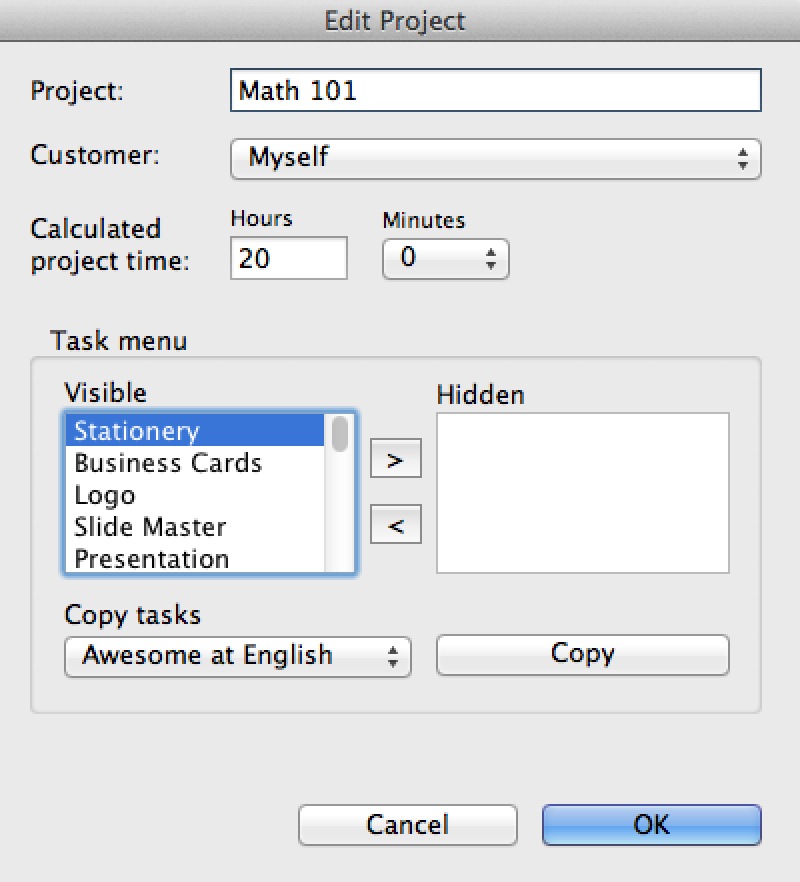
Lastly, click on the lowest bar and add a task. Be specific. Don't just call it 'Study', tasks can be 'Write 1 page', 'Solve 10 problems' or 'Attend a lecture'.
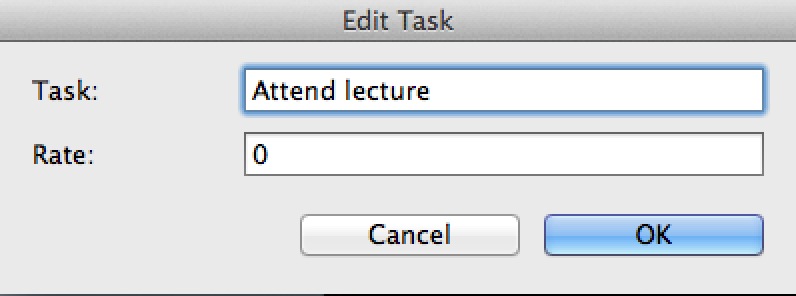
Then you can just hit play whenever you work on a specific task and track your time. Whenever you want to check your progress you can just press Cmd+4 (or Ctrl+4 on Windows) and you'll get an overview of all your records. You can even specify time frames, certain tasks or customers.
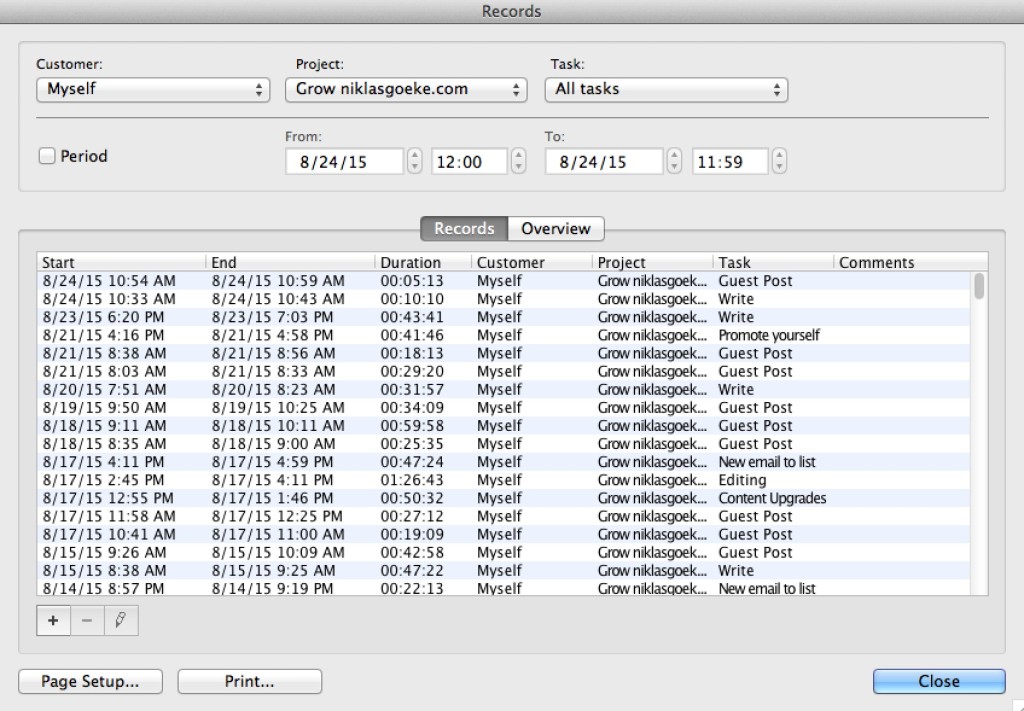
You can even see how much time in total you have spent when you click 'Overview'.

It's really cool to see I've spent over 200 hours working on my blog already, it motivates me to keep going.
Tool 2: Study Planner & Accountability Chart
To really see how far you've gotten already, you can use an accountability chart. Simply divide a piece of paper into two columns. At the end of the day, check your records in TimeEdition and write down the times on the left side and what you've accomplished on the right side.
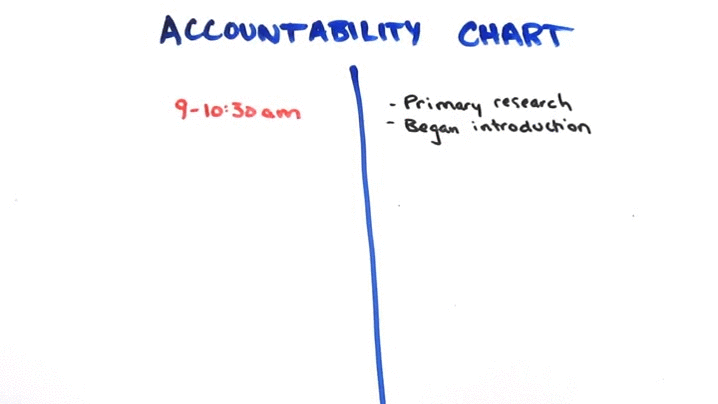
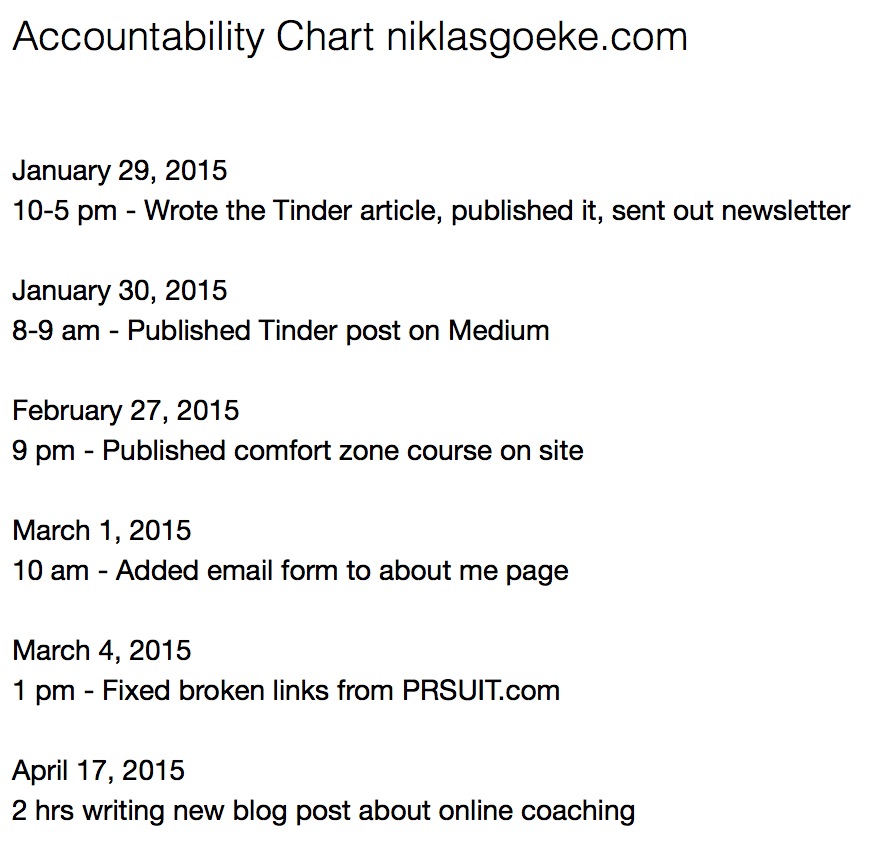
You can also do this digitally, for example in Evernote:
This especially helps you stay motivated in the beginning. Over time, as your results get bigger, you might not have to rely on this anymore, but it's a great way to get started.
If you prefer a physical version, then here is a review of five great study planners.
Final Thoughts on the Study Schedule That Works
Wow, we just covered a whole lot. Let's take a look at all the steps again, in a quick review of how to make a killer study schedule.
(remember, you should always review your study notes!):
Step 1: Find out your learning style by taking this quiz.
Step 2: Pick a very simple goal for your semester (that you can control) and come up with at least 7 tiny action items you can complete over the next week
Step 3: Block a 1-hour time slot in your calendar for studying for the next 7 days.
Step 4: Bookmark this Pomodoro Timer, so you can structure your study time into 25 minute blocks with 5 minute breaks in between, with a longer break after every 4 blocks.
Step 5: Create your own, clean study zone by cleaning up your desk or finding a comfortable and distraction-free spot. Make sure you block distractions on your computer as well.
Step 6: Try a new way of taking notes that fits your learning style.
Step 7: Use Anki to review your notes regularly.
Step 8: Make a commitment to not use your laptop or smartphone in class. Put them in a locker or leave them at home.
Step 9: Find at least one learning partner to hold you accountable to your study schedule. If you can't find one, try Patrik as your coach for a week forfree (use the coupon from the bonus section for this).
Step 10: Pick a bedtime and set an alarm for that time in order to create a regular sleep schedule.
Step 11: Install TimeEdition to track your studying time and progress and use an accountability chart to stay motivated.
All of these steps are simple and small. You could implement all of them in a few minutes each. But they have a compounding effect: once you get ALL of them right, they amount to a lot more than the sum of their parts.
You might be a little overwhelmed though, and you'd rather implement all of these small changes one at a time. So, to help you do that I've created a plan on coach.me, which will give you one specific to-do each day, so you can create a study schedule that works within 14 days! I've also included some other bonuses, here's the full list:
- Free access to this course to help you make all of these changes one day at a time
- Free week of personalized study coaching with Patrik
- Video of my evening routine so you can copy it to get a good night's sleep
- Chance to win a free coaching call with me
You can grab those bonuses here.
I wrote this post over the course of 10 days, using a daily writing schedule, working in 25-minute blocks while in my study zone, tracking all my progress. Using this system is a lot of fun. I hope you choose to give it a try and speaking of choice, I'd like to leave you with a quote from one of the greatest teachers I know.
"It is not our abilities that show what we truly are. It is our choices." – Albus Dumbledore
Finally, if you need some creative inspiration for studying, take a look at our roundup of the vision board ideas for students.
Niklas Goeke teaches marketers, bloggers and entrepreneurs how to make productivity a habit. He writes at niklasgoeke.com about overcoming fear, building willpower and making habits stick. To keep putting his in-depth guides into action, join his free newsletter.

How To Create A Good Study Schedule
Source: https://www.developgoodhabits.com/study-schedule/
Posted by: drakeimensid.blogspot.com

0 Response to "How To Create A Good Study Schedule"
Post a Comment